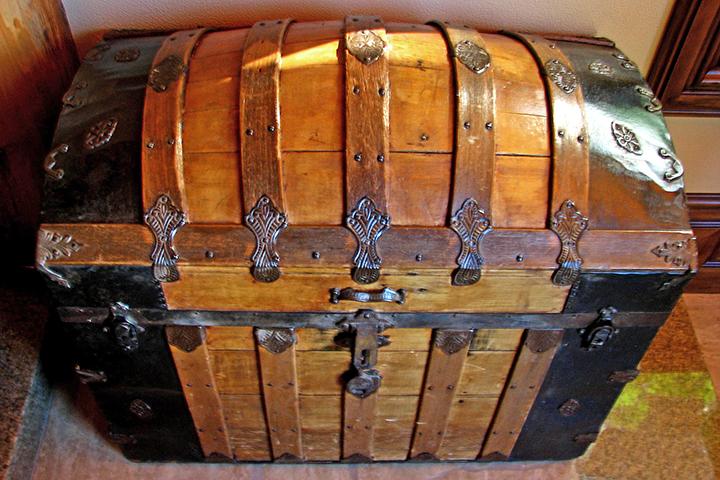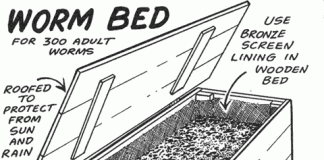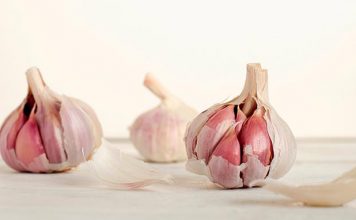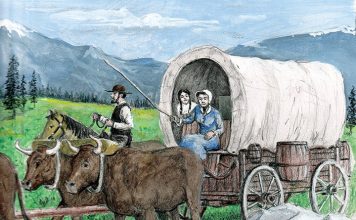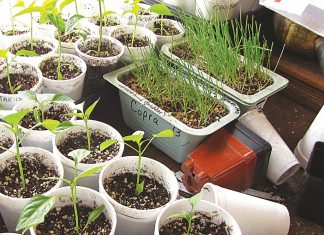| Issue #114 • November/December, 2008 |
Do you have odds and ends sitting around that you no longer need? Are you a “green” thinker, hating to throw items away that are still useful? Do you enjoy trading and swapping and just treasure hunting in general? Is your mantra “one man’s junk is another man’s treasure?” Do you enjoy being thrifty and love to recycle; taking cast-offs and finding a new use for them? Do you know other like-minded souls that live in your neighborhood or that you see on a regular basis? If you can answer yes to any of these questions then why not start a community treasure chest?
The rural community I call home consists mainly of ranch families, small home businesses, young couples, and retirees. Most families are on fixed budgets or they have been raised to abhor wastefulness, even before “green was the thing.”

With that thought in mind, my neighbors and I found ourselves always passing around a large bag of “hand-me-downs.” This bag shuffled from house to house as we claimed new treasures and added a few of our own. The bag was awkward and cumbersome and, as large trash bags tend to do, it seemed to disintegrate at the most inopportune times, more likely than not involving rain and mud! So, on a trip to town I picked up an 18-gallon rubber tote with a snap lid and a loose-leaf notebook. On the first few pages of the notebook I compiled some simple guidelines and rules and then I attached this to the tub with a heavy cord. Voila! Our community treasure chest was born.
If this seems like a fun endeavor to you, here is how to get your own community treasure chest started.
You will need to find 5-10 like-minded friends, neighbors, co-workers, community, club, or church members. It helps if you are in contact with each other on a daily or at least weekly basis. Purchase a medium sized rubber tote with handles and a lid. An 18-gallon tote is large enough for a nice selection of items but small enough that it is easy to carry and to load in the trunk of a car. I suggest you attach a wire bound notebook that includes a list of all members and their phone numbers as well as the treasure chest rules. With these minor details out of the way, you are ready to begin.
The object of the chest is for members to pass on or trade clothing and/or other items in good condition that they no longer have a use for with hopes that those items may find a home elsewhere. At the same time this gives each member the opportunity to acquire new treasures at no cost to them; thus extending the life of these items by continuing to recycle them within the community and keeping them out of the trash. It also gives members the opportunity to advertise items that are too large or too perishable to be placed in the chest. Items that have found new homes via our community treasure chest have been cookbooks, paperbacks, educational items, toys, clothing (from baby to adult), shoes, purses, socks, mittens, hats, jewelry, fabric, kitchen gadgets and dishes, toiletriesincluding hair products, perfumes, makeup, lotions and soaps, craft and hobby items, gifts, trinkets, garden items and seeds, packaged food, holiday decorations, linens, gift items, computer and office supplies, videos, tools, and hardware.
The treasure chest works something like this. The first member on the list deposits their cast off treasures into the tub and passes it on to the next person. The next member may then take any or all items from the tub that they find useful. Then they add their own cast offs to the menagerie of treasures and pass it on to the next member on the list. The chest continues down the list moving from household to household until it has gone full circle and comes back to the first member. The first member then gets to pick from the treasures and removes any of their original items that have been left in the chest after making a complete cycle. The first member again adds items looking for new homes. It continues to be passed on with each member removing their items that have made the full circle, helping themselves to new items and then again adding more unwanted items. It is that simple! It is a good idea to have a person assigned as a chest monitor. Each member is required to let the monitor know when they have passed it on and to whom. The monitor helps keep the chest moving smoothly and promptly. We lost our chest when it mysteriously disappeared and none of the members knew where it was. When it did not surface for several months, we bought another tub and started again. Suddenly, more than a year later, the first chest reappeared at a central drop off point used by several members. No one ever confessed to having it, but I believe it had gotten shoved in an inconspicuous corner of a member’s home and when it was finally found, they were too embarrassed to admit it!
Here are our guidelines and rules that you might find useful.
Rules:
1. You are welcome to take as many items from the chest as you find useful. Please share the contents with family and friends. They are free.
2. Try to contribute at least one item per cycle. This can be a household item, clothing, or shoes. These must be clean and in good condition. You are welcome to contribute as much as the chest will easily hold.
3. Please keep the chest moving. Pass it on to the next person promptly, preferably within 3 days. Make sure to call the monitor when you have passed it on.
4. When the chest has made a full cycle and returned to you, please remove any of your previously donated items and pass them on to charity. This will allow us to always have room for new items.
5. No soiled, tattered, or bulky clothing or rags, no heavy items such as large quantities of books, appliances, cleansers, or paint. Please advertise these in the ad section of the notebook.
6. Food must be sealed and within the package’s expiration dates. Other food items can be advertised in the notebook.
7. Please keep the chest neat and tidy, refold items after looking at them.
8. The attached notebook contains member’s names, phone numbers, and chest rules with the remainder of the notebook devoted to classified ads. Use it as much as you want. Please mark out any old ads that are no longer applicable. Remember to include your name and contact number or email with your ad. Please make sure the notebook remains with the chest.
Guidelines:
|
1. Ten members seem to be about the right amount to allow a nice array of items without the chest taking too long to make a cycle. We try to have a cycle completed at least once a month.
2. The chest works best if members live close to one another or have a common connection through a job or organization. In our rural community, our member order coincides with our location on the county road. This allows us to easily pass from one house to the next without anyone having to make an extended drive. If you have a secure central drop off point this also works well. We have a corner in our small country post office/fire hall/ meeting hall, where we are allowed to leave it for the next person.
3. It is nice if you can change the member order about every 6 months. Let’s face it, some people just have better treasures than others and it is only fair that the same person doesn’t always get first dibs. We usually just reverse the order.
4. The notebook attached to the chest has become the traveling classifieds and is used to advertise items that can’t be put in the chest. Members advertise items to give away, sell, or trade. They can also request items they are looking for or add services they have to offer. I once requested baby food jars for a gift project and when the chest showed up the next time, there amongst the treasures was a bag of jars with my name on it! Through our traveling classifieds, members have found homes for livestock and pets, bought and sold refrigerators, furniture, boats, cars, and hay. They have traded services and acquired jobs, canning jars, yard and garden tools, coats, boots, paints, plant cuttings, seeds, composted manure, and even unloaded their excess zucchinis!
Now more than 3 years strong, our community treasure chest has been a continued source of entertainment and resourcefulness. Through our chest we have helped each other save money, save resources, and save the environment. We have secretly helped families in need who have been too proud to take public handouts but in the privacy of their own home have found within the chest a little something to get them through. Best of all, we have become better acquainted with our friends and neighbors. It seems the treasure chest has over-flowed into other aspects of our lives. Like the worldly goods passed on in the chest, we too have something to offer, something to pass on to be admired and cherished. The greatest treasures our chest holds are the friendships and sense of community it has helped to create.


